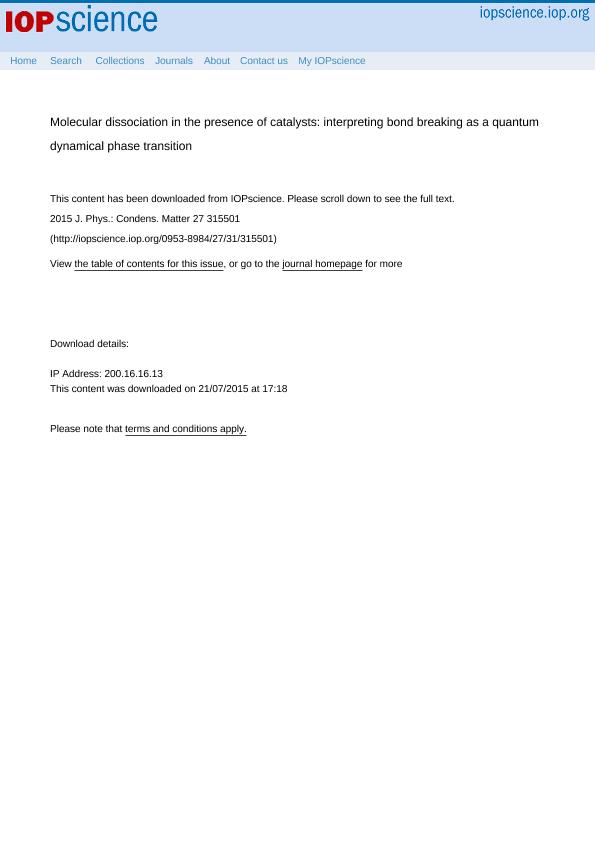Artículo
Molecular dissociation in the presence of catalysts: Interpreting bond breaking as a quantum dynamical phase transition
Fecha de publicación:
08/2015
Editorial:
IOP Publishing
Revista:
Journal of Physics: Condensed Matter
ISSN:
0953-8984
e-ISSN:
1361-648X
Idioma:
Inglés
Tipo de recurso:
Artículo publicado
Clasificación temática:
Resumen
In this work we show that molecular chemical bond formation and dissociation in the presence of the d-band of a metal catalyst can be described as a quantum dynamical phase transition (QDPT). This agrees with DFT calculations that predict sudden jumps in some observables as the molecule breaks. According to our model this phenomenon emerges because the catalyst provides for a non-Hermitian Hamiltonian. We show that when the molecule approaches the surface, as occurs in the Heyrovsky reaction of H2, the bonding H2 orbital has a smooth crossover into a bonding molecular orbital built with the closest H orbital and the surface metal d-states. The same occurs for the antibonding state. Meanwhile, two resonances appear within the continuous spectrum of the d-band, which are associated with bonding and antibonding orbitals between the furthest H atom and the d-states at the second metallic layer. These move toward the band center, where they collapse into a pure metallic resonance and an almost isolated H orbital. This phenomenon constitutes a striking example of the non-trivial physics enabled when one deals with non-Hermitian Hamiltonian beyond the usual wide band approximation.
Palabras clave:
ATOMS
,
MOLECULE
,
TRANSITION
Archivos asociados
Licencia
Identificadores
Colecciones
Articulos(IFEG)
Articulos de INST.DE FISICA ENRIQUE GAVIOLA
Articulos de INST.DE FISICA ENRIQUE GAVIOLA
Citación
Ruderman, Andres; Dente, Axel Damián; Santos, Elizabeth del Carmen; Pastawski, Horacio Miguel; Molecular dissociation in the presence of catalysts: Interpreting bond breaking as a quantum dynamical phase transition; IOP Publishing; Journal of Physics: Condensed Matter; 27; 31; 8-2015; 1-7
Compartir
Altmétricas




